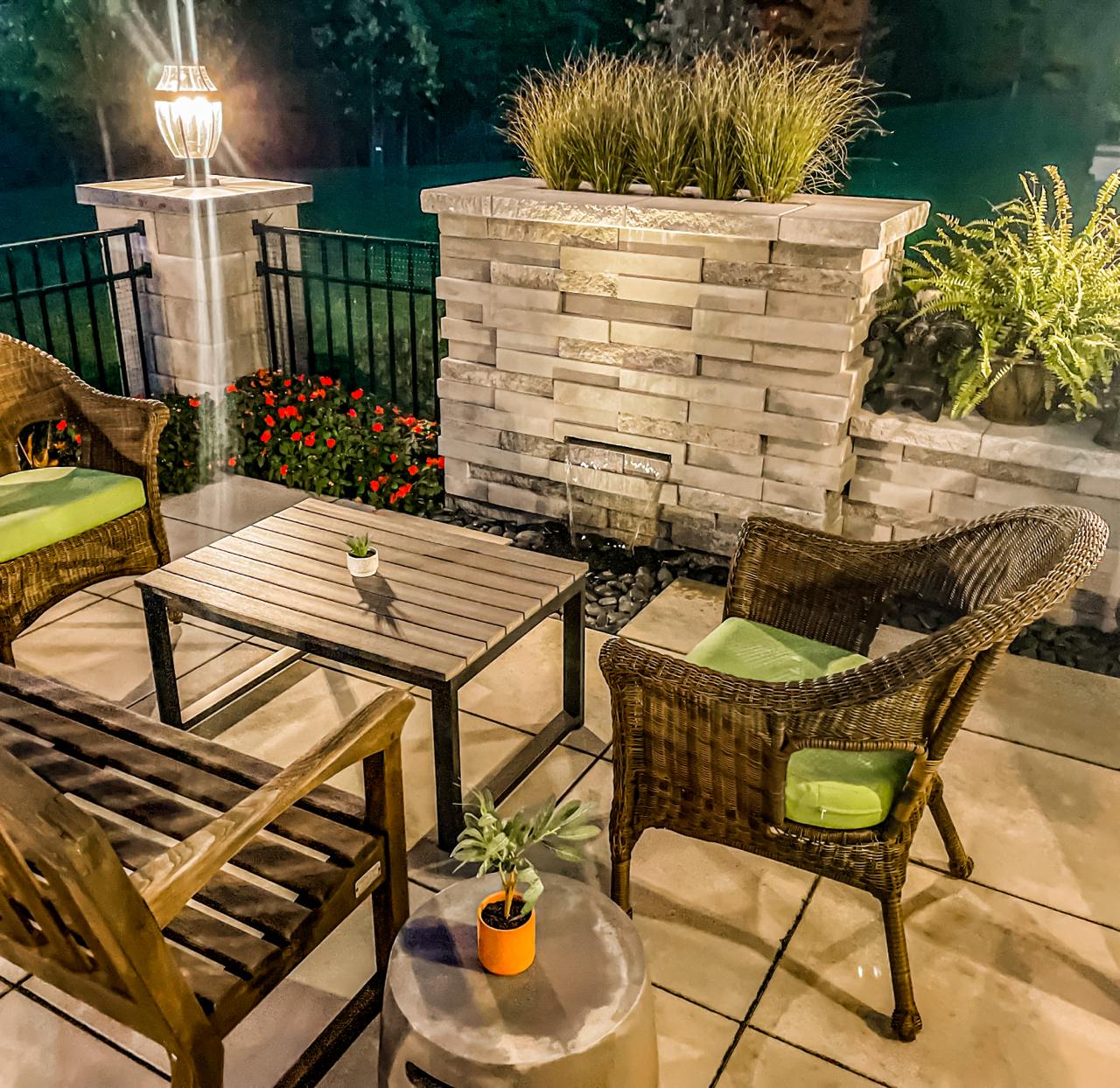Guide to Seasonal Maintenance for Your Outdoor Living Spaces in PA
Proper seasonal maintenance is essential for keeping your outdoor living spaces functional, beautiful, and resilient year-round. In Pennsylvania, the distinct seasons bring varied weather, which means adjusting your maintenance practices throughout the year. Here’s a comprehensive guide to seasonal maintenance for outdoor living spaces in PA.
1. Spring: Prepare for New Growth
As winter thaws, spring is the ideal time to prepare your outdoor space for new growth and vibrant color. Start by cleaning up any debris that may have accumulated over the winter months, including dead leaves, fallen branches, and leftover mulch. This will clear the way for plants to thrive as temperatures rise.
Spring is also the time to inspect your hardscaping features like patios, walkways, and retaining walls for any damage caused by freezing and thawing. Look for cracks or shifts and repair them as necessary. For wooden structures, such as decks and pergolas, check for rot or damage and apply a fresh coat of stain or sealant to protect against moisture. Begin planting new flowers and shrubs to add color to your landscape, and prune existing plants to encourage healthy growth.
2. Summer: Maintain and Monitor
With plants in full bloom, summer maintenance is focused on keeping your outdoor space looking its best. Regular watering is essential, especially during hot spells, but be mindful of any watering restrictions in your area. Applying a fresh layer of mulch helps retain moisture, suppress weeds, and improve the appearance of garden beds. Mulch also keeps roots cool during high temperatures, promoting healthier plant growth.
Keep an eye on pests, as they can become more active in the summer. Inspect plants for any signs of infestation, and address issues promptly using eco-friendly pest control methods when possible. Mow lawns regularly, keeping grass at an appropriate height to promote a lush appearance. Prune summer-flowering plants after they bloom to encourage more blossoms and maintain a tidy look.
3. Fall: Prepare for Dormancy
Fall is a time of transition, where you prepare your outdoor space for the colder months ahead. Rake up fallen leaves to prevent mold growth and keep garden beds neat. Use these leaves as compost or add them to garden beds for extra nutrients. Fall is also an excellent time to aerate your lawn, which improves soil drainage and reduces compaction, setting the stage for healthier grass growth in spring.
Prune back perennials and other plants as they enter dormancy, and consider planting late-season bulbs for a spring bloom. Protect any vulnerable plants with burlap wraps or a layer of mulch to insulate against cold temperatures. Finally, clean and store outdoor furniture, cushions, and decor items that may not withstand freezing temperatures. Inspect and repair any outdoor lighting and make sure all electrical components are secure and ready for winter.
4. Winter: Protect and Preserve
Winter maintenance is all about protecting your outdoor space from harsh weather conditions. Remove snow from pathways and driveways regularly to prevent ice buildup, and apply eco-friendly ice melt products to avoid damaging your landscaping. For plants, avoid excessive pruning in winter, as this can expose them to frost damage. Instead, focus on protecting vulnerable plants by adding mulch or installing temporary covers.
Check your hardscape elements periodically for signs of ice damage, especially if you have a deck or patio. Wooden decks may require additional protection, such as applying a water-repellent finish before winter. Store any fragile decor items and make sure outdoor structures, such as gazebos or pergolas, are stable enough to withstand heavy snow loads. Winter is also a good time to plan new landscaping projects for spring.
FAQ: Common Questions About Seasonal Maintenance for Outdoor Living Spaces in PA
How often should I water my garden in summer?
During summer, water deeply once or twice a week, allowing moisture to reach the roots.
What’s the best way to protect my plants in winter?
Add a layer of mulch around the base of plants to insulate roots. For especially vulnerable plants, use burlap wraps or covers to shield them from freezing temperatures.
Can I use leftover leaves as mulch?
Yes, fallen leaves can be used as mulch after they are shredded. Shredding helps them decompose faster, adding valuable nutrients to the soil without smothering plants.
How do I prevent pests in summer?
Regularly inspect plants for pests, and use eco-friendly pest control methods when needed. Neem oil and insecticidal soaps are effective, non-toxic options for controlling common garden pests.
What type of ice melt should I use on pathways in winter?
Use eco-friendly ice melts, such as calcium magnesium acetate, which is less harmful to plants and safer for pets and the environment than traditional salt-based products.
Is there any winter preparation for hardscaping?
Yes, check for any cracks in stonework or concrete and repair them before winter to prevent water from freezing and expanding in these spaces. Applying a sealant can protect surfaces from ice and moisture damage.

